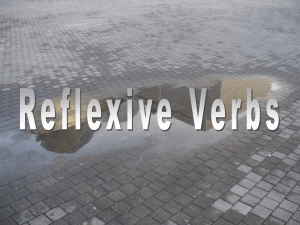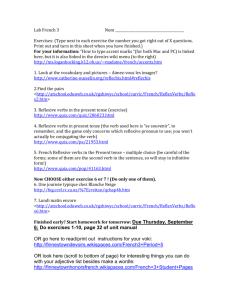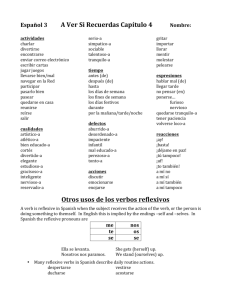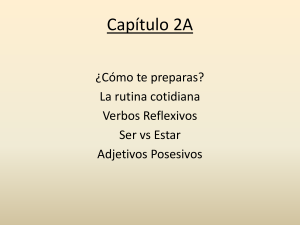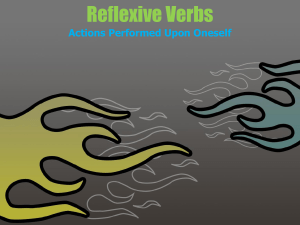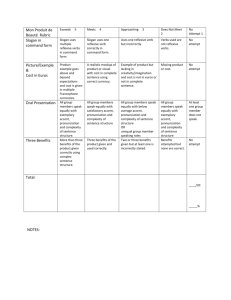p. 119 Reflexive Verbs
advertisement
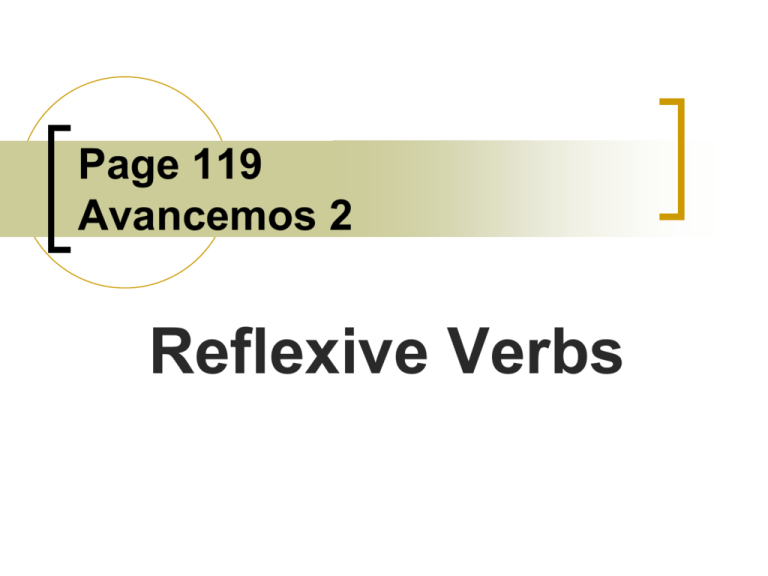
Page 119 Avancemos 2 Reflexive Verbs Reflexive Verbs Reflexive verbs are used to tell that a person does an action to himself or herself. Reflexive Verbs Reflexive verbs have two parts: a reflexive pronoun (me, te, se, nos, se) and a verb form. Reflexive Verbs LAVARSE(to wash oneself) Verb Reflexive Form Pronoun Reflexive Verbs In English, we really don’t identify with reflexive verbs. So these will seem strange to you. Reflexive Verbs In English, a sentence using a “so called” reflexive verb might be… Lauren brushes her hair. Scott bathes himself. Reflexive Verbs You must remember that these are actions being done to oneself, by oneself. For example: I wash my (my own) hair. Reflexive Pronouns me (myself) nos (ourselves) te (yourself) os se (himself or herself) se (themselves or yourselves) (yourselves) TO WASH ONESELF I wash myself You wash yourself He washes himself We wash ourselves You wash yourselves They wash themselves LAVARSE me lavo nos lavamos te lavas os laváis se lava se lavan Reflexive Pronouns They can either go before a conjugated verb or after an infinitive. Reflexive Pronouns Before the verb: Me voy a lavar el pelo. After the infinitive: Voy a lavarme el pelo. Reflexive Verbs Let’s do more verbs! CEPILLARSE me cepillo nos cepillamos te cepillas os cepilláis se cepilla se cepillan DUCHARSE me ducho nos duchamos te duchas os ducháis se ducha se duchan Reflexive Verbs When using reflexive verbs to talk about parts of the body, you have to use the definite articles: el, la, los, las Reflexive Verbs Nos lavamos el pelo. ¿Te cepillas los dientes? Reflexive Verbs Some verbs are not always reflexive: Reflexive Verbs Yo despierto a Cecilia a las siete. I wake up Cecilia at seven. Yo me despierto a las siete. I wake (myself) up at seven.
